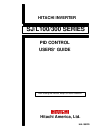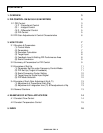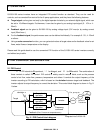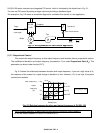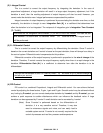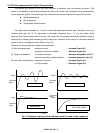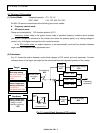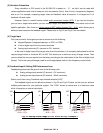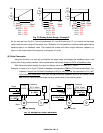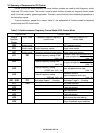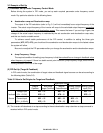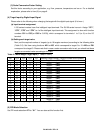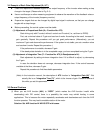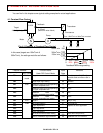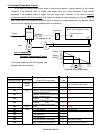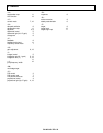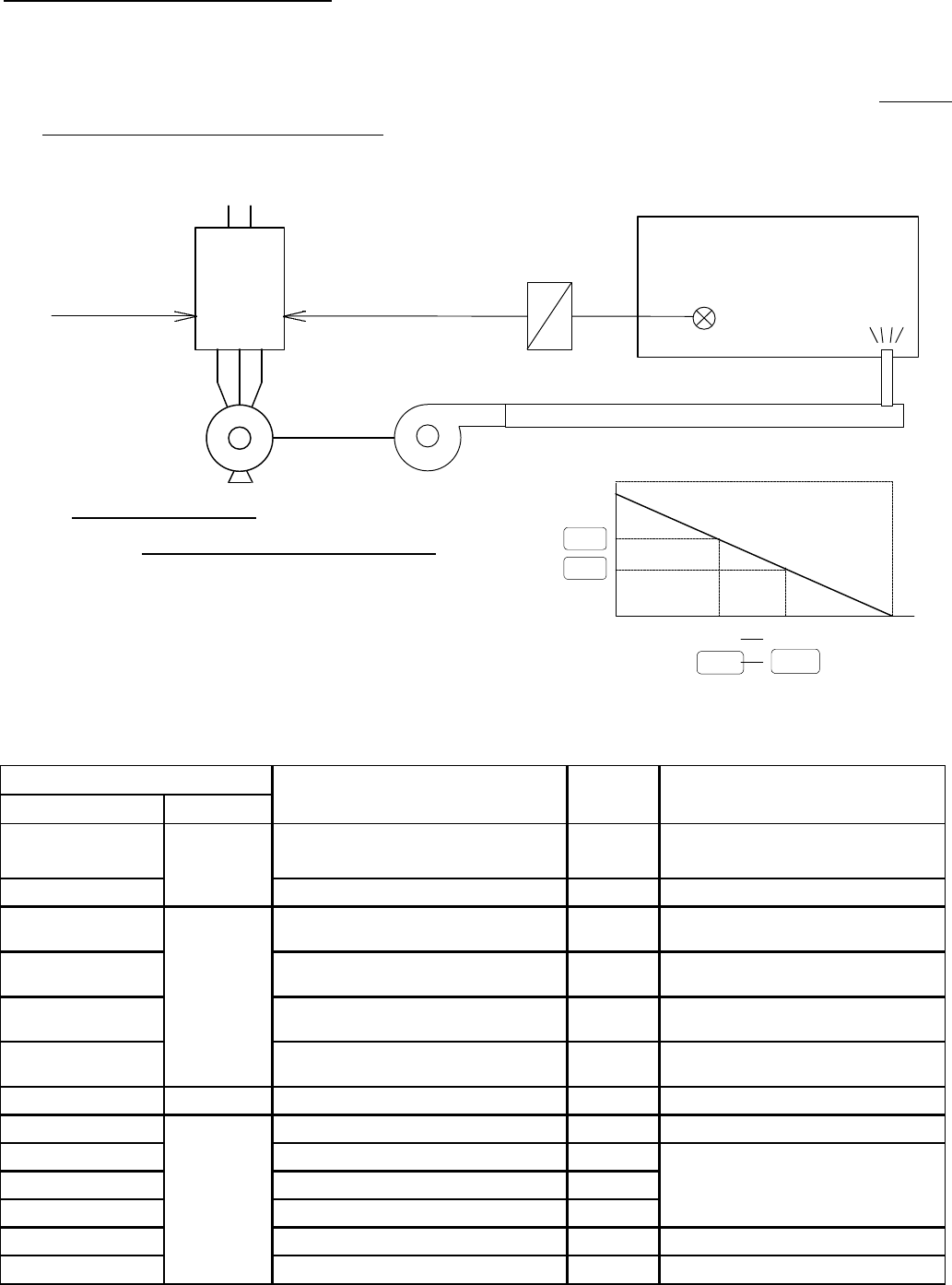
SJ100/L100 / PID / 15
4-2 Constant Temperature Control
In the case of constant flow control shown in the previous section, output frequency of the inverter
increases if the feedback value is smaller than target value, and output frequency of the inverter
decreases if the feedback value is bigger than the target value. However, in the case of constant
temperature control, this is the opposite. The inverter increases its output frequency to drive a cooling fan
much faster when the temperature feedback signal is higher than target temperature, for example. Below
you can find an example of how to configure such an application.
In this case (targets are 20 & 30 degrees), the
settings would be as follows:
Function Number
Function Name
Input
Remarks
Integrated Operator
DOP, DRW Under PID Control Mode
Data
F01
Monitor
mode
Target 0 20 Directly input “20 [deg]” because
scale conversion ratio is given
A01
Target input origin setting 02 Operator
A11 F31
Feedback value input corresponding %
for lower acceptance level
100 100%
A12
Feedback value input corresponding %
for upper acceptance level
0 0%
A13
Feedback value input
for lower acceptance level setting
0 0%
A14
Feedback value input
for upper acceptance level setting
100 100%
A21 F11
Target 1 30 30 deg
A71 F39
PID mode selection 01 PID Mode ON
A72
P-gain adjustment - Depends on each application
A73
I -gain adjustment -
A74
D-gain adjustment -
A75
PID scale conversion ratio setting 0.5 100% when 50 [deg]
A76
Origin of feedback signal selection 01 Feedback from OI-L terminal
30deg.
50deg. 100
20deg.
Feedback value range setting
%
0
Fig. 4-2 Example of
Constant Temperature Control
L100/
SJ100
Target
Feedback
Transducer
0 - 10V
(50 degrees at 10V)
Temperature sensor
Temperature
:Either 20 or 30 degrees constant
Fan
Motor
Multi-stage Target
10V0
100%
0
6V
60%
60
40
4V
40%



